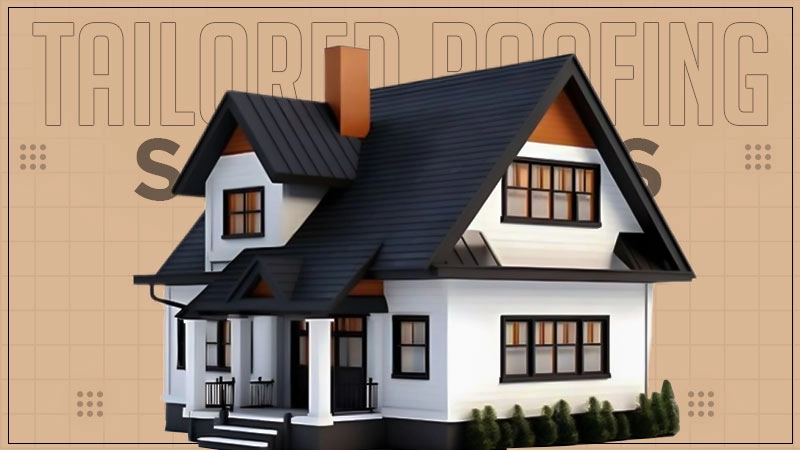Your roof is one of the most critical components of your home, protecting you from the elements and ensuring structural integrity. Various factors can lead to wear and tear, causing damage that often goes unnoticed until it becomes a major issue.
Understanding how to conduct simple check-ups on your roof can prevent long-term problems and costly repairs. The following guide will provide you with practical steps to examine your roof and identify potential risks before they escalate.
Inspecting for Wear and Tear
Begin by focusing on visible signs of wear and tear on your roof. Check for missing, cracked, or curled shingles, as these can all contribute to leaks and other forms of damage. Pay attention to the flashing, the metal pieces that seal joints and edges. Rust on flashing or deterioration around chimneys and vents can indicate trouble. Ventilation systems on roofs are important for extending the lifespan of shingles; check if vents are blocked by leaves or debris.
When you notice any damage, the next step involves determining whether you can address it on your own. Small repairs can typically be handled without professional help. You can fix your roof safely by yourself with simple DIY repairs that involve replacing missing shingles or re-sealing problematic flashing. Just make sure to follow proper safety protocols when working at heights.
Periodic photo documentation during each inspection can help you track changes. Comparing images from previous seasons may reveal gradual damage that might otherwise go unnoticed. It’s a good idea to record the dates of all repairs or maintenance tasks for future reference. Keeping a dedicated folder, digital or physical, can streamline communication if you later consult a contractor.
Identifying and Fixing Small Leaks
Finding leaks early can save you from significant damage in the future. Start by checking your ceilings and attic spaces for any signs of water stains or mold growth. These indicators can point to a leak, often originating from the roof. If you suspect a leak, perform a close inspection of your roof’s surface during dry weather. Look for any discolored areas or damage around fixtures like chimneys and skylights.
Minor leaks can often be patched effectively with rubber roof cement or roofing tape. Apply the patch on a clean surface, making sure to smooth out any air bubbles. Remember that it’s important to allow the patch to cure for the recommended time. For more significant leaks, think about professional services, especially if there is underlying damage.
Checking Gutters and Downspouts
Your gutters play a critical role in directing water away from your roof and home. Clogged or damaged gutters can lead to water pooling on your roof, increasing the likelihood of leaks or structural damage. Regularly clean and inspect your gutters to ensure that they are functioning correctly. Look for signs of rust, peeling paint, or gaps where debris can accumulate.
If you notice that water isn’t draining properly, install gutter guards to minimize debris entry. Make sure downspouts are directed away from your foundation, effectively minimizing excess water flow that can lead to serious issues. Adding extensions to downspouts can offer even greater water diversion, contributing to your home’s health.
Assessing Roof Drainage
Effective drainage on your roof is vital for preventing water accumulation. Flat roofs, in particular, can suffer from issues related to drainage. Inspect areas where water gathers and make sure drains are clear of obstructions. If water pools, it may compromise the integrity of your roofing materials and lead to problems like mold growth.
For flat roofs, you might think about installing a roof drain or scupper to facilitate proper drainage. In sloped roofs, ensure that gutters are adequately pitched to facilitate water movement. Regular monitoring of drainage systems can prevent future repairs and save money in the long run.
Maintaining Roof Attics for Insulation and Ventilation
Don’t forget to inspect your attic insulation and ventilation, as these elements work hand in hand with your roof. Adequate insulation keeps your home comfortable and heating costs manageable, while proper ventilation helps prevent humidity buildup that can damage roofing materials.
Check if insulation is evenly distributed across your attic floor and that vents are not blocked. An effective combination of intake and exhaust vents promotes airflow, reducing the likelihood of mold and ice dam formation in colder climates. Trapped heat can accelerate roof deterioration, making regular assessments necessary.
Seasonal Roof Maintenance Tips
Seasonal maintenance of your roof can help extend its lifespan significantly. Before winter sets in, check for any signs of damage. Ensure gutters and downspouts are clear, and address any issues found during your preliminary inspections. Focus on areas prone to snow accumulation, as excess weight can strain your roof. In spring, perform a thorough inspection to assess damage inflicted by winter storms. Thin out debris and leaves from drains and gutters.
During fall, trim overhanging branches to reduce the chances of them falling onto your roof during storms. Remember that the change of seasons can prompt different challenges, so adjust your maintenance practices accordingly. Keeping up with seasonal tasks aids in protecting your home from leaks and weather-related damage throughout the year.
Utilizing a checklist while conducting these inspections can be incredibly helpful. Regular maintenance can catch issues early, saving you a significant amount in future repairs. If any concerns persist or you find damage beyond what you’re equipped to handle, don’t hesitate to reach out to roof specialists who can offer guidance and solutions tailored to your needs.



